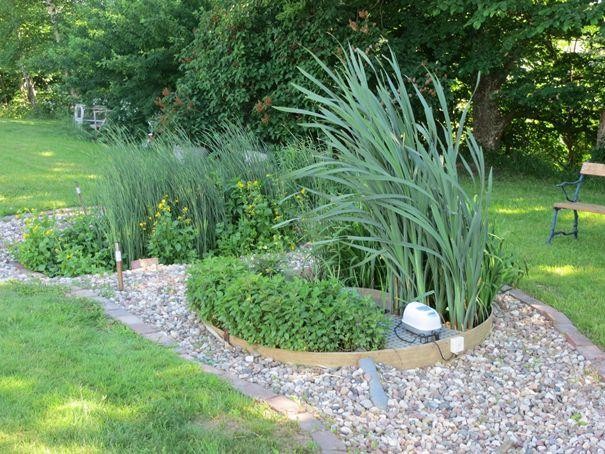Purification of wastewater by mimicking nature
Alnarp Cleanwater has developed a biological system that purifies wastewater. The ACT Natural™ system aims to imitate nature’s own way of purifying human sewage and requires no chemical additives. Instead, it is a natural system that does not impact the environment.

The challenge
According to the Swedish Environmental Protection Agency, there are currently about half a million private sewers that need attention. Unwanted discharge of poorly treated wastewater causes eutrophication and oxygen depletion not only in the Baltic Sea, but also in lakes and rivers which means that there is a strong need to improve wastewater treatment also for private sewers.
The innovation
Alnarp Cleanwater is located in Sweden and has developed a biologically and ecologically balanced system, to treat wastewater in areas that lack connections to a municipal sewer system. The system can also be used to clean dams in parks and to some extent handle storm water. The treatment system, called ACT Natural™, requires no chemicals and has a unique decomposition of sludge to obtain a low environmental impact. The ACT Natural™ process is similar to nature's own purification and can be seen as a natural way to treat wastewater, leading to a sustainable water cycle. The system can consist of up to three subsystems, one main treatment system, InterACT®, one optional pre-treatment container, ProACT®, and another optional treatment step ReACT® connected after InterACT® in areas where a 90% reduction of phosphorus is required.
The organic matter in the wastewater is dissolved in a first chamber in the ProACT® and led on to a new chamber where the organic material is degraded by microorganisms in a biofiltrating process. This is a unique property of the system and enables sewage sludge to be reduced in a biological way, instead of being separated for later removal. The water is then pumped to the InterACT® step. Here the wastewater once again gets exposed to microorganisms, but also to aquatic plants that live in the tank, fed on nutrients in the wastewater. Sometimes it takes an extra step to reduce additional phosphorus. This step is called ReACT® and may have a different structure depending on local conditions. However, the basic functioning is sorbation of phosphorus. The adsorbation is made in a way allowing the retained phosphorus to easily be brought back to farmlands – an ecological way to combat the approaching Peak Phosphorus.
Why did it work?
The ACT Natural™ system has undergone a long-term third party evaluation by Swedish institution JTI. The results verify that the system meets the highest treatment standard defined by Swedish authorities. Together with IVL Swedish Environmental Research Institute ACT Natural has also been tested for reduction of pharmaceutical residues, an area of increasing concern. Reduction ratios are generally better than for conventional treatment methods. The company has nearly 20 owners who has participated in the financing of first the development of ACT Natural™ and later the commercialization of the project. (The Pharma Residues study was financed mainly by a public grant from Swedish Vinnova). Various researchers have also greatly contributed to the development of the ACT Natural™ system.
Further deployment
The large amount of private sewers not fulfilling prevailing treatment standards constitutes a major ecological threat. The company therefore continues to market the system to individual house owners and would like to establish more ACT Natural systems in the field to reduce eutrophication and to reduce the amount of long range transports of sludge to municipal sewage treatment facilities. The system is ready for full scale deployment, having reached level 9 on the TRL scale.
Links:
The WebsiteThe brochure